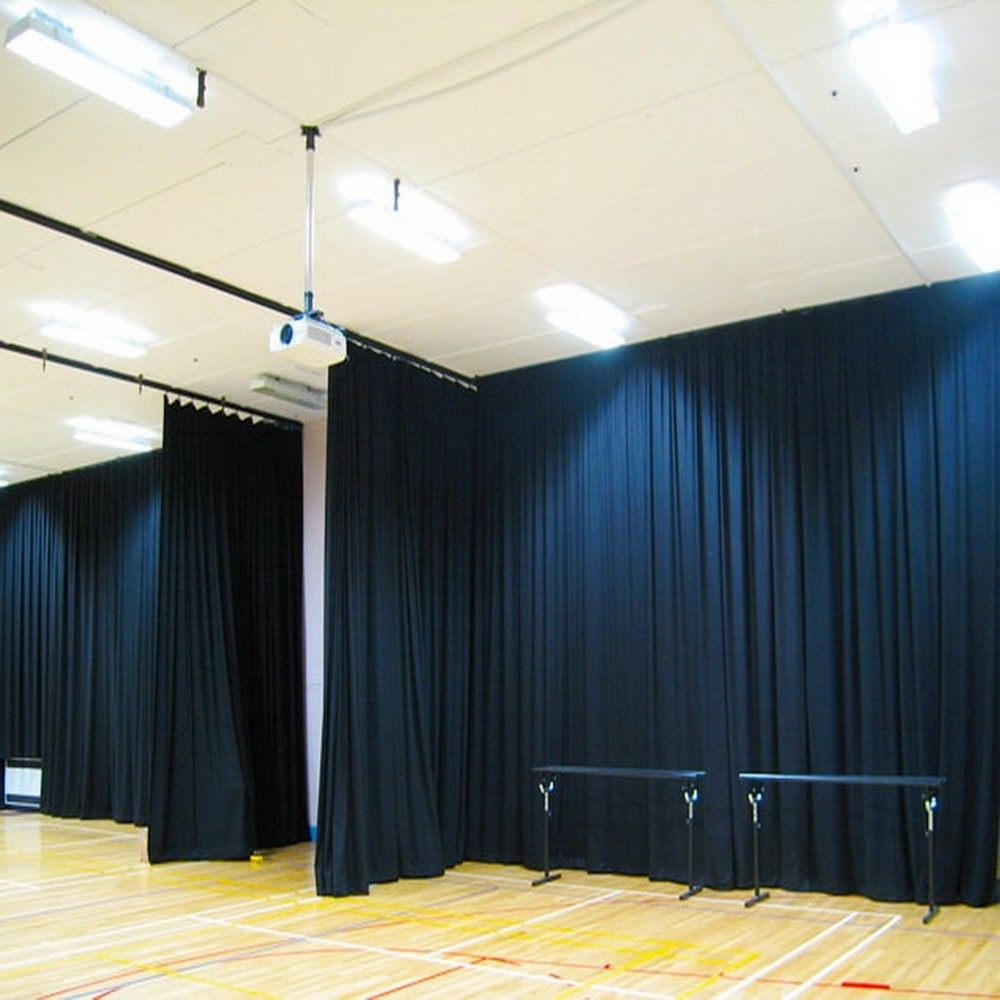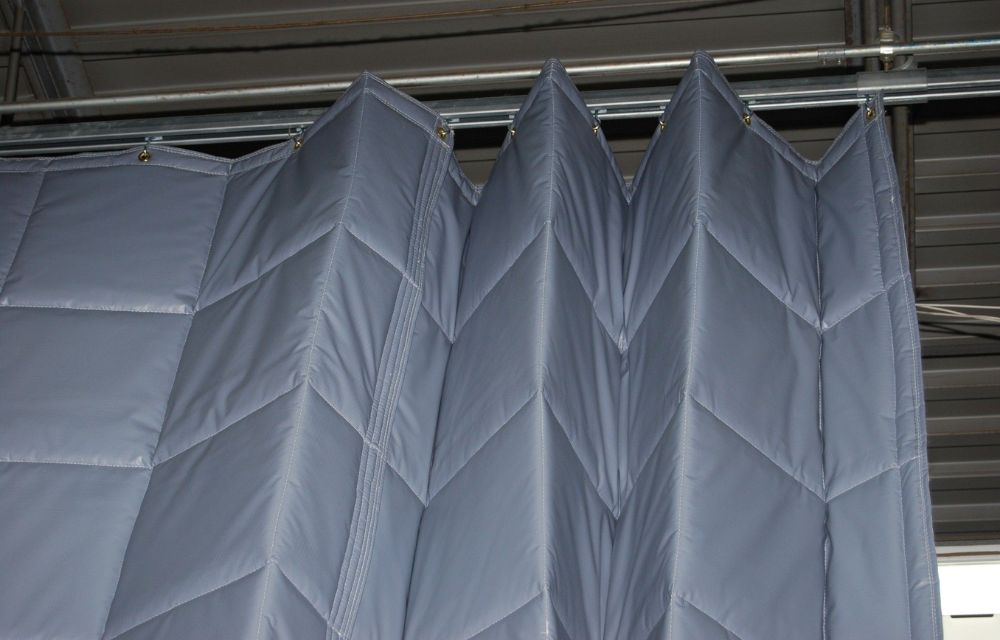In a world that never seems to quiet down, creating peaceful and private indoor spaces is more important than ever. Whether it’s the noise of city traffic, neighbors, or even household appliances, unwanted sound can disrupt sleep, concentration, and overall well-being. One of the most accessible and effective solutions for reducing indoor noise is the soundproof curtain.
Unlike traditional curtains, soundproof curtains are engineered specifically to block, absorb, and dampen sound waves, making them ideal for both residential and commercial use. In this ultimate guide, we’ll explore what soundproof curtains are, how they work, where they’re most useful, and what to consider when choosing the best ones for your space.

What is a Soundproof Curtain?
A soundproof curtain is a heavy-duty window or doorway covering designed to reduce the transmission of sound from outside to inside and between rooms. These curtains are typically made from dense, multi-layered materials such as polyester, velvet, or fiberglass insulation sandwiched between layers of acoustic fabric. While no curtain can block 100% of sound, these curtains significantly reduce ambient noise and echo, making rooms quieter and more comfortable.
How Do Soundproof Curtains Work?
Soundproof curtains work through a combination of sound blocking and sound absorption. Here’s how:
- Sound Blocking: This is achieved through the use of thick, dense materials that physically prevent sound waves from passing through. The heavier the curtain, the better it can block noise.
- Sound Absorption: These curtains also help absorb sound waves that would otherwise bounce off walls and windows, reducing echo and reverberation within a room.
Some high-end soundproof curtains are even equipped with additional layers like mass-loaded vinyl or acoustic foam to boost their noise-reducing capabilities.
Benefits of Using a Soundproof Curtain
1. Noise Reduction
The primary benefit of a soundproof curtain is, of course, noise control. Whether you live near a busy road or share walls with noisy neighbors, these curtains provide a noticeable reduction in intrusive sounds.
2. Improved Sleep
Studies show that excessive noise, especially during sleep, can affect health. By minimizing outside noise, soundproof curtains create a more restful environment for better sleep quality.
3. Increased Privacy
In addition to blocking noise, these curtains also prevent sound from escaping a room—making them ideal for home offices, therapy rooms, or shared apartments.
4. Energy Efficiency
Because of their dense, insulating materials, soundproof curtains also help regulate indoor temperatures, reducing energy bills in both summer and winter.
5. Aesthetic Appeal
Available in a variety of colors, textures, and styles, these curtains enhance the visual appeal of your space while serving a functional purpose.
Ideal Spaces for Soundproof Curtains
- Bedrooms: Keep the space quiet for undisturbed sleep by using soundproof curtain systems that block traffic or neighborhood noise.
- Home Offices: If you’re working remotely, a sound-controlled environment improves concentration and productivity.
- Living Rooms and Media Rooms: Enhance your entertainment experience by reducing echo and outside distractions.
- Studios and Practice Rooms: Whether you’re recording music or practicing instruments, soundproof curtains can help reduce sound spill.
- Apartments and Condos: Shared walls often mean shared noise—these curtains add a layer of privacy and peace.
What to Look for in a Quality Soundproof Curtain
1. Material Density
Thicker curtains with tightly woven fibers perform better in sound blocking. Look for materials like velvet, suede, or triple-weave polyester.
2. Multiple Layers
A good soundproof curtain usually includes multiple layers—some with added acoustic insulation or mass-loaded vinyl for enhanced performance.
3. Size and Coverage
The curtain should extend well beyond the window or door frame. Floor-to-ceiling and wall-to-wall coverage increases its effectiveness in blocking noise.
4. Installation Method
Curtains hung close to the wall with minimal gaps provide better sound insulation. Use heavy-duty rods and ensure the curtains are pleated for added density.
5. Maintenance and Durability
Choose a curtain that is easy to clean and maintain, especially if used in high-traffic or dusty areas.
Common Misconceptions
-
Myth: Soundproof Curtains Eliminate All Noise
No curtain can completely eliminate noise. Instead, they significantly reduce the amount of sound that passes through, particularly mid to high-frequency sounds.
-
Myth: Any Thick Curtain is Soundproof
While thick curtains may offer some noise reduction, only specialized soundproof curtain products designed with acoustic properties can offer effective sound insulation.
Enhancing the Effectiveness of Soundproof Curtains
- Layer with Blinds: Adding thick blinds or shades behind your soundproof curtains adds another sound barrier.
- Seal Windows and Doors: Use weather stripping or acoustic sealant to close any gaps that let in noise.
- Use Curtain Liners: Some manufacturers offer acoustic liners that can be added behind the curtain for additional noise control.
Conclusion: Perfect Acoustics – Bringing True Quiet to Your Space
If you’re serious about upgrading your acoustic environment with the right soundproof curtain, expert guidance makes all the difference. That’s where Perfect Acoustics stands out. With in-depth knowledge and years of experience in acoustic solutions, Perfect Acoustics offers premium-grade soundproof curtain options tailored to your specific needs. From consultation to installation, their team ensures that your space not only looks great but also sounds better. When silence matters, trust Perfect Acoustics to deliver the quiet you deserve.

